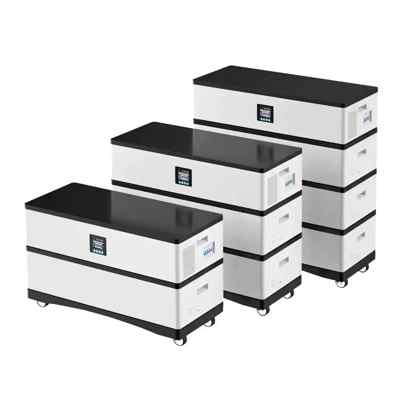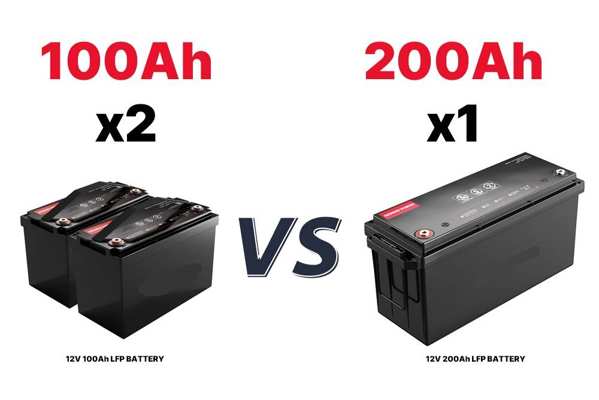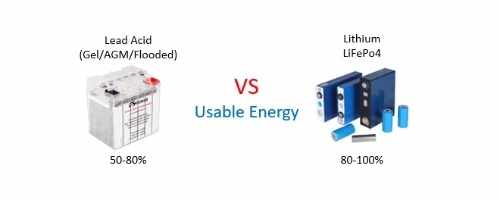Pourquoi les batteries Lifepo4 empilables sont le meilleur choix?
Êtes-vous fatigué des factures d'électricité élevées et inquiet des pannes de courant soudaines? Il y a un flexible, une solution peu encombrante qui vous permet de reprendre le contrôle de l’énergie de votre maison.
Les batteries lithium-ion empilables sont le meilleur choix car elles offrent une incroyable flexibilité, installation simple, et peut évoluer avec vos besoins. Vous pouvez commencer petit et ajouter d’autres modules de batterie plus tard, ce qui en fait un intelligent, investissement à l’épreuve du temps pour toute maison ou entreprise.

Vous voyez les grands avantages maintenant. Mais pour faire le bon choix, vous devez comprendre les détails. Il est important de savoir ce qui fait cela technologie1 le travail et pourquoi il devient si populaire. Donc, approfondissons et explorons ce que ces batteries2 sont tout à propos.
Qu'est-ce qu'une batterie empilable?
Confus par tous les différents types de batteries disponibles? Vous vous demandez ce qui rend le mot « empilable ?" si spécial? C'est une idée simple qui vous permet d'économiser beaucoup d'espace et de problèmes.
Une batterie empilable est un système de stockage d'énergie modulaire. Il est composé de batteries individuelles que vous pouvez connecter, ou "pile," ensemble. Cette conception vous permet d'augmenter facilement votre capacité énergétique sans avoir besoin d'en acheter un tout nouveau., plus grand système.

Quand j’ai exploré pour la première fois les solutions solaires, l'idée d'un seul, batterie massive semblait permanente et limitante. Et si ma famille s'agrandissait, ou nous avons acheté une voiture électrique? C’est là qu’intervient la beauté des batteries empilables. Considérez-les comme des éléments constitutifs de votre énergie. Vous commencez avec une unité de base, qui comprend les principaux contrôles, puis vous ajoutez des modules de batterie par dessus. Chaque module que vous ajoutez augmente votre capacité totale de stockage. Cette approche modulaire est différente de la traditionnelle, systèmes de batterie tout-en-un livrés dans un seul, taille fixe. Si vous avez besoin de plus de puissance avec un système traditionnel, vous devez remplacer l'unité entière. Avec un système empilable, tu ajoutes juste un autre bloc. Cela en fait un moyen incroyablement flexible et rentable de gérer votre énergie sur le long terme., s'adapter parfaitement à votre vie changeante.
Principales caractéristiques de Stackable vs. Batteries monolithiques
| Fonctionnalité | Système de batterie empilable | Monolithique (Tout-en-un) Batterie |
|---|---|---|
| Évolutivité | Excellent. Ajoutez des modules selon vos besoins. | Pauvre. Capacité fixe. |
| Installation | Plus facile. Manipulez les modules plus légers un par un. | Difficile. Nécessite du matériel de levage lourd. |
| Flexibilité | Haut. Commencez petit et augmentez votre investissement. | Faible. Nécessite un investissement initial important. |
| Redondance | Bien. Si un module échoue, d'autres peuvent encore fonctionner. | Aucun. Si l'unité tombe en panne, le système est en panne. |
Dans quels scénarios d'utilisation choisir une batterie LifePo4 empilable?
Vous vous demandez si une batterie empilable est la solution adaptée à votre situation ?? Vos besoins en énergie sont uniques, que ce soit pour une petite maison ou une grande usine. Une solution universelle fonctionne rarement.
Vous devriez choisir une batterie LiFePO4 empilable si vous prévoyez que vos besoins énergétiques changent, avoir un espace limité, ou souhaitez commencer avec un investissement plus petit. Ils sont parfaits pour les maisons équipées d'énergie solaire, cabanes hors réseau, et petites entreprises où la flexibilité est essentielle.

J'ai travaillé avec de nombreux clients, et leurs besoins sont toujours différents. C'est pourquoi je recommande fortement les systèmes empilables dans de nombreux cas.. Ils s'adaptent à vous, pas l'inverse.
Pour votre maison
Peut-être que vous débutez avec l’énergie solaire pour réduire vos factures mensuelles. Un petit système empilable avec un ou deux modules est un excellent point de départ. Plus tard, si vous achetez un véhicule électrique ou installez une thermopompe électrique, tu n'as pas besoin de paniquer. Vous appelez simplement un installateur pour ajouter un autre module à votre pile existante. Cela maintient le processus de mise à niveau simple et abordable.
Pour votre entreprise
Pour les clients commerciaux, la gestion des coûts d’électricité est essentielle. Un système de batterie LiFePO4 empilable permet à une entreprise de démarrer en compensant sa consommation d'énergie pendant les périodes de pointe, heures coûteuses. À mesure que l'entreprise se développe, il peut étendre son stockage d'énergie pour couvrir davantage de ses opérations, fournir une alimentation de secours pour les équipements critiques, ou même prendre en charge les bornes de recharge pour véhicules électriques pour les employés et les clients. L’évolutivité signifie que l’investissement initial est gérable et augmente avec le succès de l’entreprise.
Pour une vie hors réseau
Si vous avez une cabane isolée ou si vous vivez complètement hors réseau, la fiabilité énergétique est primordiale. Un système empilable vous offre une tranquillité d'esprit. Vous pouvez commencer avec un système qui répond à vos besoins de base et ajouter plus de capacité si vous décidez d'y passer plus de temps ou d'ajouter plus d'appareils..
Est-il préférable d'avoir 2 100Ah piles ou 1 200Batterie AH?
Êtes-vous confronté au choix entre une grosse batterie ou deux plus petites? Cette décision peut avoir un impact sur la fiabilité et la flexibilité future de votre système. Vous ne voulez pas faire le mauvais appel ici.
Souvent, avoir deux batteries de 100 Ah vaut mieux qu’une batterie de 200 Ah, surtout dans un système empilable. Cette configuration fournit une redondance, en cas de panne d'une unité, l'autre peut toujours fournir de l'énergie. Il vous offre également plus de flexibilité pour l'installation et l'expansion future..

Je me souviens d'une installation pour un client dans une région éloignée. Leur pouvoir était critique. Nous avons choisi un système avec plusieurs modules plus petits au lieu d'un seul grand.. Quelques années plus tard, un module a eu un problème. Mais en raison de la conception modulaire, le reste du système a gardé ses lumières allumées pendant que nous organisons un remplacement. Cette expérience a prouvé la valeur de la redondance. Une seule grosse batterie crée un point de défaillance unique. Si ça descend, tout tombe en panne. Avec deux batteries plus petites, vous disposez d'un filet de sécurité intégré. Au-delà de la sécurité, l'installation est beaucoup plus facile. Imaginez essayer de soulever un seul, batterie lourde de 200 Ah dans un espace restreint. Maintenant, imaginez transporter deux batteries plus légères de 100 Ah. C’est une énorme différence en termes de complexité de travail et d’installation.
Comparer vos options
| Facteur | Deux batteries de 100h (Empilable) | Une batterie de 200Ah (Monolithique) |
|---|---|---|
| Redondance | Haut. Si l'on échoue, les autres oeuvres. | Aucun. Un seul point de défaillance. |
| Installation | Facile. Plus léger, unités plus gérables. | Difficile. Très lourd et encombrant. |
| Évolutivité | Excellent. Commencez par un, ajouter le deuxième plus tard. | Aucun. Vous êtes enfermé dans 200Ah. |
| Flexibilité | Haut. Peut être configuré dans différents espaces. | Faible. Nécessite un seul grand espace. |
Pourquoi les gens aiment les piles au lithium?
Pensez-vous toujours aux batteries au plomb à l’ancienne? Ils sont lourds, besoin d'un entretien régulier, et ne dure pas très longtemps. Il y a bien mieux, technologie moderne disponible aujourd'hui.
Les gens aiment les piles au lithium, spécifiquement le Lithium Fer Phosphate (LiFePO4), parce qu'ils durent beaucoup plus longtemps, sont plus sûrs, et sont plus efficaces. Elles sont également plus légères et ne nécessitent aucun entretien par rapport aux batteries au plomb traditionnelles., ce qui en fait le grand gagnant du stockage d'énergie.

Quand on parle de batteries empilables, on parle presque toujours de chimie LiFePO4. Il y a une bonne raison à cela. Ma première expérience avec l'énergie hors réseau impliquait des batteries au plomb. Je devais vérifier régulièrement les niveaux d'eau, bornes propres, et souciez-vous de la ventilation pour les vapeurs acides. C'était une corvée constante. Le passage au LiFePO4 a changé la donne. Ces batteries sont complètement scellées et sans entretien. Mais les avantages sont bien plus profonds. Ils ont une durée de vie beaucoup plus longue, ce qui signifie qu'ils peuvent être chargés et déchargés des milliers de fois avant de devoir être remplacés, ce qui dure souvent plus d'une décennie.. Les batteries au plomb pourraient ne durer que quelques années. LiFePO4 est également la chimie du lithium la plus sûre disponible, car il n'est pas sujet à la surchauffe. Enfin, vous pouvez utiliser davantage l'énergie stockée. Une batterie LiFePO4 peut être déchargée en toute sécurité pour 90% ou plus de sa capacité, alors qu'une batterie au plomb ne doit être déchargée que jusqu'à 50% Pour éviter les dommages. Vous obtenez plus d'énergie utilisable à partir d'un plus petit, batterie plus légère.
LiFePO4 contre. Le plomb-acide en un coup d'œil
| Fonctionnalité | LiFePO4 (Lithium) | Plomb-acide |
|---|---|---|
| Durée de vie (Cycles) | 3,000 - 6,000+ | 300 - 700 |
| Capacité utilisable (Ministère de la Défense) | 80% - 100% | 50% |
| Efficacité | ~95 % | ~80-85% |
| Entretien | Aucun | Requis (Par exemple, arrosage) |
| Sécurité | Très haut | Modéré (gaz, déversements d'acide) |
| Lester | Léger | Très lourd |
Conclusion
Les batteries LiFePO4 empilables offrent la meilleure flexibilité, sécurité, et une valeur à long terme. Ils s'adaptent à votre vie, vous garantissant une alimentation électrique fiable aujourd’hui et demain. Contactez-nous pour votre solution.
